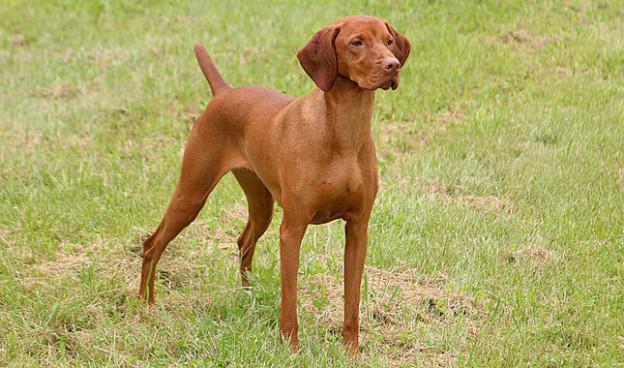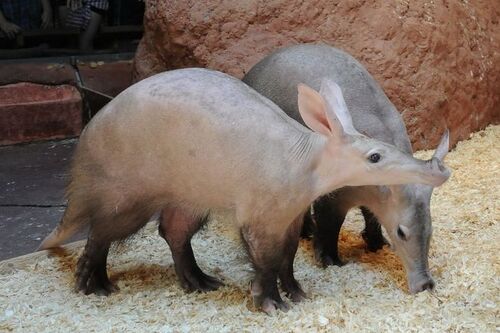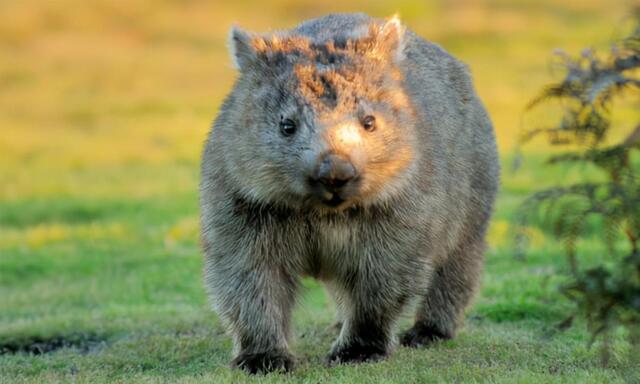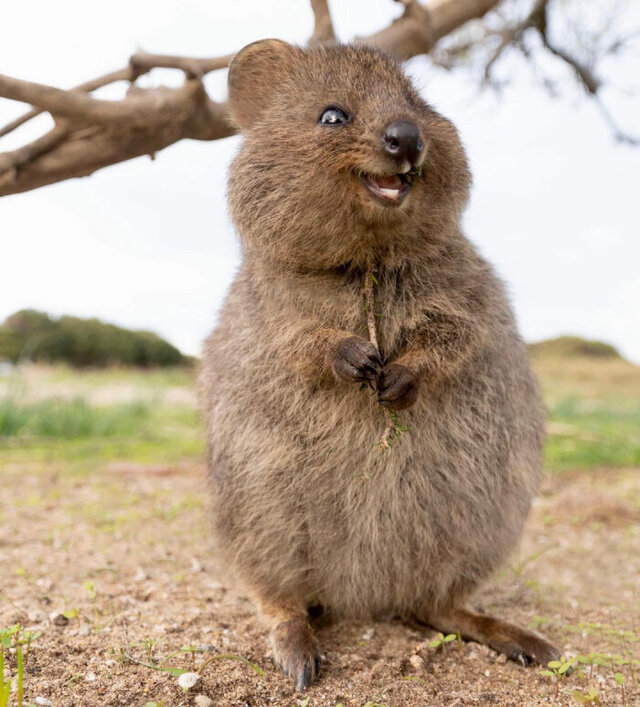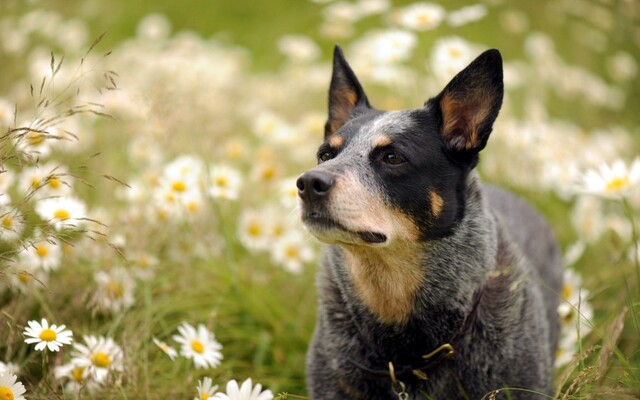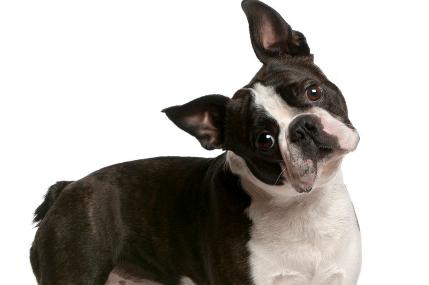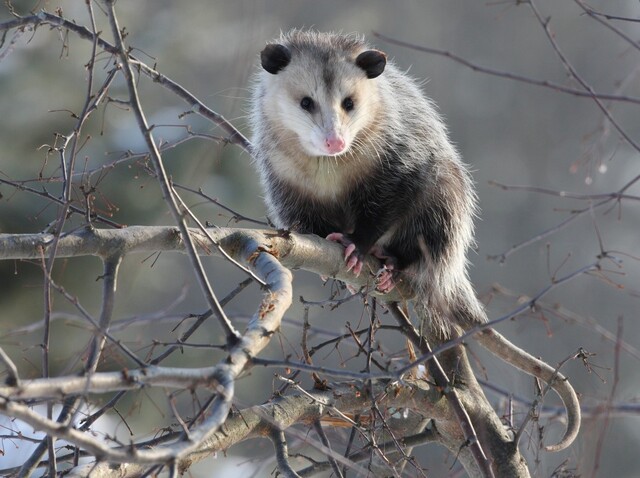Chinchilla
IUCN
ENBasic Information
Scientific classification
- name:Chinchilla
- Scientific Name:Chinchilladale,Chinchilla,South American Chinchilla, Woolly Mouse
- Outline:Rodents
- Family:Chinchilla Chinchillinae Chinchillidae Rodentia
Vital signs
- length:30-38cm
- Weight:430-700g
- lifetime:10-20years
Feature
Chinchillas, also known as chinchillas, are very popular pets. They have the following characteristics:
Appearance features: Chinchillas are very similar to rabbits and squirrels in appearance. They are small and fat, and females are usually slightly larger than males. They have a rabbit-like head and a squirrel-like tail. They have large, thin, blunt and round ears, large and bright eyes, and many whiskers of varying lengths on the sides of their noses. They have short forelimbs with 5 toes; strong hind limbs with 4 toes, and are good at jumping.
Coat color: The back and sides of chinchillas have gray-blue fur, and the abdomen gradually fades to white. After artificial breeding, their colors have many variations.
Life habits: Chinchillas are native to the Andes Mountains in South America and are accustomed to living in rock crevices and caves. Their average lifespan is about 10 to 20 years. Chinchillas are vegetarian animals and mainly eat special pellets and Timothy
Distribution and Habitat
Chinchillas are native to the Andes Mountains in South America. The environment in these areas is characterized by dryness, large temperature differences between day and night, and an altitude of about 1,600 feet. Chinchillas usually live in caves and rock crevices.
Appearance
They are small and fat, with females usually slightly larger than males. They have a rabbit-like head and a squirrel-like tail. They have large, thin, blunt-round ears, large, bright eyes, and many whiskers of varying lengths on the sides of their noses. They have short forelimbs with 5 toes, strong hind limbs with 4 toes, and are good at jumping.
Coat color: The back and sides of the chinchilla have gray-blue fur, which gradually fades to white on the belly. After artificial breeding, their colors have changed in many ways.
Details
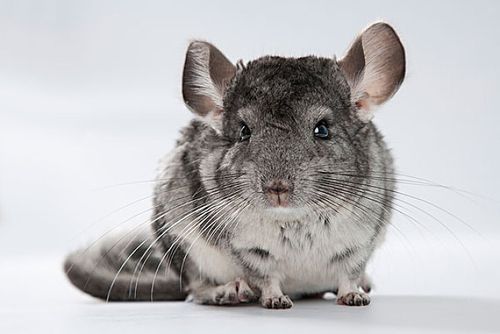
Chinchilla, also known as chinchilla, chinchilla, chinchilla, woolly mouse, chinchilla, etc., is a common name for a small rodent of the genus Chinchilla (scientific name: Chinchilladale, foreign name chinchilla), belonging to the subfamily Chinchilla under the family Chinchilla. There are two species of short-tailed chinchilla and long-tailed chinchilla. They are native to the Andes Mountains in Peru, Bolivia, Chile and Argentina, and currently only the native population in Chile can be confirmed. Long-tailed chinchillas are widely raised as pets and fur animals in the world.
The appearance of chinchillas is very similar to rabbits and squirrels. They are small and plump, and females are slightly larger than males. The head is like a rabbit and the tail is like a squirrel. The ears are large, thin, and blunt; the eyes are large and bright, and there are many whiskers of different lengths on the sides of the nose; the limbs are short, its forelimbs are short and have 5 toes; the hind limbs are strong and have 4 toes. It is good at jumping, and can generally jump to a height of about one meter, but is not good at digging. There is a fluffy tuft of hair at the end of the tail; the hair on the back and sides is gray-blue, and the abdomen gradually fades to white. Short-tailed chinchillas are larger in size, with a body length of 30-38 cm and a tail length of about 10 cm; long-tailed chinchillas are smaller in size, with a body length of 24-28 cm and a tail length of 14-15 cm. Adult female chinchillas are larger in size, generally weighing more than 700 grams, and male chinchillas weigh more than 600 grams. Newborn chinchillas generally weigh more than 60 grams. The body of wild chinchillas is mostly black-gray, with a white abdomen. Artificially cultivated long-tailed chinchillas have all-white and other gradient colors, and there are many colors after artificial cultivation. . They have up to 60-80 hairs in each pore (cats and dogs have only 1-3 hairs in each pore), which can prevent parasites. They are the most densely covered land animals (sea otters have the most densely covered aquatic animals), and are famous for their soft and beautiful fur, which is why they are hunted in large numbers by humans. Such soft and dense fur has also brought the nightmare of almost extinction to the chinchilla. Although the number of artificially raised chinchillas is quite large, their native population in the wild was already on the verge of extinction in the late 19th century. Currently, both types of chinchillas are assessed as endangered species by the World Conservation Union (IUCN).
Because the hair is too dense, fleas generally cannot live on chinchillas. They will shed their hair in about three months, but they will shed their hair irregularly throughout the year. The length of the hair is about one inch, which makes them feel chubby. Because they have such thick hair, they must pay attention to keeping the breeding environment cool in summer, as chinchillas can easily die from heat stroke.
When the former Ministry of Agriculture of the People's Republic of China introduced chinchillas as fur animals before 1983, they were named chinchillas because of their soft and fine fur like silk. After introducing chinchillas as pets in Hong Kong, they were called chinchillas, which are said to resemble the cartoon character "My Neighbor Totoro" (Japanese: トトロ; Romanized: Totoro) in the 1988 Japanese animated film "My Neighbor Totoro". In addition, chinchillas are also transliterated as Chinchilla or Qingzilan based on their English name chinchilla, which comes from the Chincha people, the indigenous people of southwestern Peru, who used chinchilla skin as clothes.
Comparison between short-tailed chinchilla (above) and long-tailed chinchilla (below)
There are two existing chinchillas: short-tailed chinchilla (Chinchilla chinchilla) and long-tailed chinchilla (C. lanigera), both of which are hunted in large numbers by humans for their high-quality fur and are on the verge of extinction. The short-tailed chinchilla has an unknown number of individuals, while the long-tailed chinchilla is thought to have originated from the long-tailed chinchilla.
Compared to the long-tailed chinchilla, the short-tailed chinchilla is larger, has smaller ears, thicker fur around the neck and shoulders, and a shorter tail.
Ecology
Originally, the native chinchilla occupied coastal areas, mountainous areas, and mountain ranges in Chile, Peru, Argentina, and Bolivia. However, overexploitation has caused the native chinchilla population to decline to low levels. As early as 1914, a scientist declared the species endangered. During a five-year field survey in the Jujuy Province of Argentina (the results of which were published in 2007), no specimens were found. In 1953, the native chinchilla population in Chile was considered extinct, but was found in an area of the Antofagasta Region in the late 20th and early 21st centuries. Native chinchillas are probably extinct in Bolivia and Peru, although one specimen that may have come from a local population has been found in a restaurant in Cerro de Pasco.
Native to the Andes Mountains of South America, chinchillas live in caves and rock crevices at altitudes of 1,600 feet. The climate is dry, with a large temperature difference between day and night, and chinchillas rely on tropical plants (such as bark, roots, and cacti) for survival, making them extremely resilient. Native chinchillas live in rock crevices, mountains, and caves. They are good jumpers, capable of jumping up to 1.8 meters high. Predators in the wild include birds of prey, cats, dogs, skunks, and snakes. Chinchillas' defensive skills include urinating and shedding hair when bitten. Wild chinchillas have been found to feed on plants, fruits, timothy hay, seeds, and small insects. Such eating habits are not suitable for the digestive system of domestic chinchillas. They mainly eat special pellets and Timothy hay. If they swallow seeds or nuts, they may get sick or even die.
Chinchillas are social animals. They can reproduce at any time. Chinchillas have a single oviduct and can only give birth 1-2 times a year, and the probability of giving birth to 1-2 pups each time is 80%. The gestation period is about 111 days, which is longer than that of most rodents. Because of the long gestation period, the newly born chinchillas are covered with fur and have their eyes open. The number of pups in each litter is small, mainly two, but most of them can only survive one.
Personality characteristics
Chinchillas are independent, lively and active, and very curious. They like to drag anything near the cage into the cage to chew and study it.
Chinchillas are usually gentle and not aggressive. When they encounter an enemy, they can only run away or pee on the enemy. Chinchillas are one of the few animals with "expressions", and they will show their joy, anger, sorrow and happiness. In addition, the "weaklings" who are naturally vegetarians in nature have almost super powers to sense any hostility and malicious approach. It will understand if you are good to it, but it will be very nervous if you just want to catch it and play with it.
The personality of the chinchilla is very similar to that of a child, naughty and willful. Any corporal punishment will cause it to rebel, and instead make it distrust the owner and turn its back to the owner (this is a negative attitude in animal psychology, pretending that you do not exist and do not want to pay attention to you). The self-esteem of chinchillas is very strong. If you deliberately tease it with snacks through the cage several times and do not let it eat, some chinchillas will hide aside and sulk at you. At this time, even if you put the snacks to its mouth, it may deliberately not eat or look at it!
The chinchilla is also a small animal that needs the owner's attention very much. They will attract your attention by making noise in the cage, or deliberately jumping around in your reach but running away when you reach out to touch it.
Sensory characteristics
Hearing: They have very good hearing, and even the slightest sound cannot escape their ears. So they are also very sensitive to noise. Sometimes you may wonder why my chinchilla seems to not need to sleep, and its eyes are open every time you peek at it? In fact, it is just that its hearing is sensitive, and even a small sound can wake it up.
Vision: Their protruding large eyes show that they are active animals at night, allowing them to see the surrounding environment clearly in the dark. However, they may not be able to judge height accurately. Sometimes they jump from heights that can cause them to be injured, especially in emergencies or in sunlight. So be more careful when letting them out. Under strong light, its pupils will automatically close and then go to sleep.
Taste: They will eat what they think is edible, and they may not be able to distinguish what is harmful food.
Smell: They rely on their sense of smell to identify their own kind and their owners.
Touch: Their long whiskers help them find their way in the dark, so don't cut their whiskers off.
Species
Chinchillas are a completely independent species. There are four species: Brevicoudata, King Chinchilla, Costina and Lanigera (a hybrid of Brevicoudata and Costina). The chinchillas we see are all a mix of Brevicoudata, Costina and Lanigera. It is difficult to find a purebred Brevicoudata, Costina or Lanigera, so there is actually no difference between purebred and hybrid chinchillas.
In biology, they are a unique species of chinchilladale.
Chinchilladale is divided into the following types:
Brevicoudata: Adult body length is about 32cm, tail length is about 10cm, body size is large, hair is long and dense, hair color is slightly yellow or coffee, lack of luster, low fertility, gestation period is 128 days, mood is very stable, and it is almost extinct in the wild.
King Chinchilla: A large chinchilla with a length of 40cm, it has been extinct hundreds of years ago. There is only one specimen collection now
In the Senckenberg Museum in Germany.
Costina: 24-28cm in length, tail length about 14cm. Small body, pointed nose, long ears. Fine fur, bluish color. Strong fertility, gestation period of 111 days, emotional tension, extinct in the wild.
Lanigera: It can be said to be a hybrid of Brevicoudata and Costina, with a moderate body, round face and short ears. Short and dense fur, bluish color. Gestation period of 111 days.
Human use
The name of the chinchilla comes from the local Indian tribe, the Chinchas, who used chinchillas as food and clothing.
In the 15th century, a tribe of Indians called the Chinchas captured these tiny animals as food and used their fur to make beds. They also wore robes knitted from chinchilla fur. (The Spanish named this small animal Chinchilla after the Chinchas tribe.)
Later, the Chinchas were conquered by the once powerful Inca Empire. Under Inca law, the Chinchillas were forbidden to wear robes made of chinchilla fur. They immediately became the exclusive fur of Inca royalty and were only allowed to be worn by Inca nobles.
Chinchilla furs, accessories
Fur industry
The international trade in chinchilla fur dates back to the 16th century. The fur trade was hot because of the soft fur of the small animal, which grows an average of 60 hairs in a follicle. Europeans found the fur of this small animal to be soft and hunted the chinchilla in large numbers; by the early 19th century, the chinchilla was on the verge of extinction. The color of the fur is similar, making it ideal for small garments or lining large garments (the latter may be made entirely of fur). Because chinchillas are relatively small, a full-length chinchilla coat may require 150 furs. This demand for chinchilla fur puts great pressure on the other two species and led to the extinction of one of them. Although it is illegal to kill wild chinchillas, they are now endangered due to illegal poaching. Farmed chinchillas are still mainly used as a raw material for fur.
From the initial 11 chinchillas in 1923, the chinchilla industry slowly developed. By 1950, captive-bred chinchillas were being sold for thousands of dollars per pair. During this market exploration period, visionary people could see that the chinchilla industry had a bright future. These people saw the vast potential market for chinchilla fur. They formed an organization to create a chinchilla fur market. There are an estimated 1 million chinchillas in the world, with the largest number of chinchillas kept in the United States, followed by Canada, Argentina, Germany, the Netherlands, Denmark, Chile, Uruguay and other countries.
Pet Industry
Chinchillas kept as pets are mainly velvet chinchillas (i.e. long-tailed chinchillas), and the long tails are more common in the wild than the short-tailed chinchillas (the short-tailed chinchillas have been hunted to near extinction). They have smaller bodies, longer tails and larger ears.
Chinchillas are popular pets, but they require a lot of care. Owners should buy from experienced, qualified pet suppliers who understand the habits and needs of chinchillas. Chinchillas must be given plenty of exercise and good care of their teeth, as they continue to grow throughout their lives. Chinchillas also have no ability to sweat to dissipate heat, so their body temperature needs to be very well monitored and controlled. They should be kept in an environment of 16 to 12°C. The cage should be placed in a well-lit area, but not in direct sunlight or among clutter.
Chinchillas have an instinct to clean their fur by sand bathing, which is rolling in sand made from good quality pumice, and this cleaning activity is generally done several times a week. Chinchillas do not bathe in water; if they get wet, they should be dried immediately and thoroughly, otherwise bacteria will grow in their fur and may even worsen into skin infections. The thick fur of chinchillas protects against parasites, such as fleas, and also reduces loose dander.
Breeding chinchillas requires a period of cohabitation between male and female chinchillas. Pregnancy rates are relatively low because male chinchillas are generally smaller in size. One mouse per litter is most common. It is recommended to keep female mice separate from male mice after birth to avoid aggressive male mice in estrus attacking mice after being rejected by female mice after giving birth.
Scientific research
Due to their characteristics in lipid metabolism and degenerative neurodegeneration, they are suitable for studying atherosclerosis or Alzheimer's disease and have been developed as experimental animals. Scientific research on chinchillas has been ongoing since the 1950s. Since the 1970s, research has mainly focused on the auditory system of chinchillas. At the same time, in other research fields, chinchillas are used as animal models to study Chagas disease, and in the field of gastrointestinal diseases, chinchillas are used as animal models to study pneumonia, Listeria, and pestis and Pseudomonas infections.
Veterinary Medicine
Broken bones
Chinchillas are very active little animals that have a lifelong life and generally recover well from injuries. Treating a broken bone or wound in a chinchilla is no different than treating a similar injury in any other animal. Simple wounds can be cleaned and treated with ointments. If a wound is covered, the chinchilla needs to be fitted with an Elizabeth collar to prevent it from licking the wound.
Broken bones are difficult to treat because chinchillas prefer to sit on their hind legs and feed with their front paws, so many types of injuries can disrupt their preferred feeding habits. Animals in casts can often be fed by hand, which may comfort them.
If a broken bone does not heal properly, amputation is usually recommended. Even with amputations (both forelimbs and hindlimbs), chinchillas can live happily in captivity.

Infectious diseases
Domestic chinchillas
The best way to prevent infectious diseases is to prevent them rather than treat them after they have been infected. Prevention of infectious diseases includes keeping chinchillas' dens clean, providing them with a natural environment, providing an optimal diet, and proper vaccination.
Listeria infection is not a typical chinchilla disease, but it can be spread as a digestive disease in a group. If diagnosed, all chinchillas in the group should be treated. Higher hygiene standards should be required during and after treatment.
Pasteurella disease can be acquired through food and then spread among a group of chinchillas. Symptoms include emotional apathy, digestive disturbances, and fever
Pseudomonas aeruginosa infection is common in the wild and affects chinchillas in the same way as other animals. The disease can cause mass mortality in chinchillas and, in pregnant chinchillas, can cause spontaneous abortions.
Respiratory infections can have many causes, but regardless of the cause, the end result is usually difficulty breathing and increased nasal discharge. Young chinchillas are more likely to contract the disease, but even though it is contagious, the disease does not usually develop into an epidemic.
Commonly observed gastrointestinal symptoms include constipation or diarrhea. Such phenomena are usually the result of dietary problems. However, if such symptoms occur under the condition of a reasonable diet, it may be an infectious disease. Diet as a cause of the disease should be considered in advance before accepting other treatments. If the food has spoiled, it should be discarded and fresh food should be used. Constipation in chinchillas is difficult to observe, because it is difficult to observe whether the excrement of a group of chinchillas contains the excrement of a single individual. If this phenomenon is observed, a gentle treatment can be used: feeding the chinchillas with liquid paraffin to soften their excrement. Experienced owners can help chinchillas defecate
Psychological health
Chinchillas are easily frightened, and when they are unhappy, they may have physical symptoms. To protect their health, care should be taken not to disturb them (many things can cause distress to chinchillas). Owners can directly observe the behavior of chinchillas in response to recent changes, because chinchillas are so sensitive that some new things that bother them can make them as a living thing.
Psychological reactions. It is not reasonable to suddenly change the diet of chinchillas, especially when they are sick; such behavior will upset them. Sick chinchillas may go on a hunger strike when they are stressed, which will make them weaker.
Social chinchillas must not be disturbed during the nursing period (February-March, August-September), and chinchillas are very sensitive during the breeding season. Chinchillas are social animals and may be upset if their partners change during the breeding season. They will also be troubled by changes in diet during this period, so breeders should ensure that there is an adequate supply of feed for chinchillas at the beginning of the breeding process, and the feed should not be changed during the breeding period.
Medical treatment
Chloramphenicol, neomycin, and spectinomycin can be used as drugs to treat digestive problems in chinchillas. Sulfonamides dissolved in water may also be used. Colistin can be used as an effective antibiotic.
Feeding method
Daily communication
Adaptation: When the chinchilla just arrives at the new home, the owner should not rush to let it out of the cage. Let it stay in the cage for a while to get familiar with the new environment and the new owner, and then let it out to play for more than half an hour. The play space must be free of wires, plastics and dangerous items.
Communication: When the owner is free, he can gently call the chinchilla's name next to the chinchilla's cage and talk to it. This will allow the chinchilla to remember its name and the owner's voice. It should be noted that it must be said kindly, and it cannot be scolded loudly, otherwise the chinchilla will only be afraid of you and will not approach you.
Teeth grinding: Like all rodents, the teeth of chinchillas grow very fast, so it is necessary to provide teeth grinding items for them to grind their teeth, prepare some hanging bite strings, and teeth grinding stones to chew. If they are found to be worn, they should be replaced in time. Old chinchillas often have tooth problems.
Feeding method
The main food is chinchilla food and timothy grass. The cecum is well developed, and the beneficial bacteria in the stomach and intestines help them digest. Because grass food is difficult to be completely digested and absorbed, there are still a lot of residual nutrients in the feces, so chinchillas will eat their own feces to absorb and utilize the nutrients again.
Chinchillas are rodents, and their teeth need to rely on eating grass food for proper wear. Therefore, chinchillas need to be provided with clean chinchilla food and timothy grass 24 hours a day. Every morning, the consumption of the food box should be observed to determine whether the chinchilla's appetite and digestion are normal. Generally, the chinchilla's food intake at night accounts for 80% of the total food intake. If the chinchilla is found to have not eaten overnight or there are a lot of leftovers, then the feces should be carefully observed. If the feces are found to be thin, hard or soft, it proves that the chinchilla may suffer from constipation or diarrhea. If the chinchilla can crush the feces by itself, it is soft feces, and the amount of grass can be increased and the amount of grain can be reduced. If the feces are hard and thin, a very small amount of applesauce can be fed.
Food: Since chinchillas are rectal animals, they must be fed with food and grass together, and the amount of feeding should be unlimited. When a cat is small, its stomach is relatively fragile, so it is best not to feed it snacks first. Wait until the cat is 3 months old before starting to feed it in small amounts. If you want to train it, you can use grass or pellets instead of snacks, and the effect is the same.
Drinking water: The amount of water each chinchilla drinks every day is different. You don’t have to be too strict, but you must ensure the hygiene of the drinking utensils. Don’t use raw water for drinking water, you can use purified water or boiled water. Drinking water must be kept fresh and changed once a day.
Snacks: You can usually use a small amount of snacks to please the chinchilla and get close to it; but don’t feed too much, the amount must be strictly controlled, such as roses, 1 to 2 pieces a day. If you feed too many snacks, not only will the chinchilla be picky and not eat staple food, leading to long-term malnutrition, but it may also cause indigestion and diarrhea in the chinchilla. Occasionally, it can be used as a reward for the chinchilla to improve its taste.
Hygiene and bathing
Supplies: Clean once a day, throw away leftover food, wipe furniture springboards with a clean towel, clean feces on the bottom of the cage and tray, replace wet bedding to avoid bacterial growth, and spray disinfection with alcohol regularly. A dirty and messy environment can easily lead to bad mood and skin diseases in chinchillas.
Bathing: Bathing is extremely important for chinchillas. It is recommended to use bath powder for bathing once every 2 days. It must be special bath powder for chinchillas and replace it with new bath powder every day. Chinchillas will roll around in the bath powder to bathe themselves.
Related tools
Cages: Choose metal cages made of galvanized welded wire mesh with a mesh of about 1.5 cm. The larger and more spacious the better.
Food box: For pellet feed, a heavy porcelain basin that is not easy to step on can be used.
Hay box: For hay, a special wooden hay rack or a heavy porcelain basin that is not easy to step on can be used, and it should be separated from pellet feed.
Drinker: A special nipple-type waterer. Choose a high-quality waterer to avoid leakage and moisture in the cage, which can cause chinchilla fungus, etc.
Toys: Dry applewood branches and grinding stones (without gypsum) are the best. One apple branch a day, and hang more toys to chew on, and avoid paper and plastic products.
Toilet: Used to collect chinchilla urine, ceramic is the best, do not choose plastic materials to avoid chewing and causing danger.
Bedding: Special paper cotton can be used (only suitable for chinchillas that cannot turn the toilet), and special sawdust or wood particles can be placed in the tray to absorb urine. If the bedding is wet, it needs to be replaced in time.
Running wheel: The diameter of the running wheel should be greater than 38cm. If it is too small, it will cause spinal dysplasia or deformity.
Special tips: Do not put plastic and paper products in the cage, otherwise it is easy to be bitten by chinchillas, which will cause serious digestive system diseases.
Variety color
Standard gray: The whole body is gray, the abdomen is white, the gray-white and black hair, and the body is gray, which is divided into dark gray and light gray.
Beige: white belly, beige body and face, pink ears, grape purple or red eyes.
Silky black: black face and black body, white belly, extremely black and shiny hair, obvious hand lines and foot lines, different appearance from ordinary chinchillas, with longer ear hair at the base of the ears.
Silky coffee: like velvet black, but black is replaced by coffee, coffee face and coffee body, white belly, pink ears, red eyes or grape purple eyes.
Silver spots: white base, with obvious gray spots forming a beautiful pattern on the face and body.
Light black: easily confused with standard gray. The difference is that the belly is light gray, and the paws are light black instead of white.
Bear black: all black with gray hair.
Dark black: all black, the color is between bear black and pure black.
Pure black: all black, without any hair, the hair is extremely black and shiny.
Pink and white: the whole body is beige, red eyes, black eyes, grape purple eyes, pink ears
Pure brown: the whole body is brown, the eyes are black or brown-red, the ears are pink, and the paws are pink. The colors are divided into light brown, medium brown, dark brown, and chocolate. The depth of the color depends on the number of black genes carried.
Purple gray: the whole body is gray with purple, and the belly is white.
Growth environment
1. It can live in groups, but it is territorial:
Chinchillas can be raised together, but they are also territorial. If you want to raise multiple chinchillas, pay attention to whether there is enough space for activities. They need time to adapt to their companions. Don't expect to be able to successfully co-cage, because it depends on the personality of individual chinchillas. When co-caging, it is done in a territory that is not the territory of both parties, and the chance of success will be higher. It is recommended to co-cage with the same sex to avoid injuries caused by poor care during the breeding period.
2. Avoid noise and strangers:
Compared with other animals, chinchillas are very neurotic animals. They are also very allergic to noise, strange places and strangers. When they feel scared, they will make noises. Long-term nervousness and a small and dirty living environment will cause chinchillas to bite their fur. The chinchilla cage should be placed in a quiet place. If the surrounding environment is noisy, the chinchilla will not be able to rest well due to nervousness.
3. Cool and ventilated: The chinchilla cage should be placed in a cool and well-ventilated place, but not in a vent. If the chinchilla is always
If the wind blows directly, they will catch a cold. Summer is a sad season for chinchillas, because their fur is very thick, so when the weather is hot in summer, you must turn on the air conditioner at home to lower the indoor temperature.
4. Nocturnal:
Chinchillas only start to move at dusk or evening. During the day, they will hide to rest and only eat a small amount of food until dusk. They have a unique body structure that allows them to be flexible in a dark environment.
5. They should be kept in a relatively high and deep cage:
Many people think that rabbits like to jump the most, but in fact, chinchillas like to jump more than rabbits. They can jump up to a height of one meter at any time. A tall and spacious cage with a large number of springboards can satisfy their habit of jumping. It is not recommended to use cabinet cages or small cages to raise chinchillas, so as not to cause chinchillas to inhale their own hair loss or cause hair eating disease.
Pregnancy and childbirth period
Caging
1-Before assembling the cages, the male and female mice must be placed side by side to let them get familiar with each other.
2-The owner must be present when the rats are caged together for the first time. If you see the rats fighting, you must separate them immediately and let them continue to get familiar with each other through the cage. Otherwise, the rats will get hurt by biting each other.
3-After caged together, the owner must observe the situation inside the cage. If the mating plug is eaten by the rats, the pregnancy period of the female rat cannot be calculated.
Mating plug: white translucent waxy cylinder, about 1cm long, diameter: about 2-3mm.
4-If the female rat is found to have blood in urine or even blood clots around the genitals, it means that the male rat is overexcited during mating, causing the female rat to be injured, and should be sent to the hospital immediately.
5-If the mating plug is found, it is basically certain that the female rat is pregnant. The female rat should be placed alone in the birthing cage, separated from the male cat, to prevent the male rat from forcing mating again.
6- Suggestions for setting up the birthing cage:
Standard cage + food bowl + water dispenser + grass rack (external grass rack is recommended) + grinding stone (volcanic ash stone is recommended) + couple's nest (birthing bed) + 1 springboard (if there is no place, it can be left alone)
7-Place the birthing cage in a quiet place without direct sunlight, so that the mother mouse can get familiar with the birthing cage environment and wait for the birthing with peace of mind.
Birthing period
1-When the mother mouse is pregnant for about 100 days, remove the bottom net of the birthing cage and let the mother mouse stay directly on the sawdust. After that, the owner should reduce the disturbance to the mother mouse. Ensure that the temperature in the house is around 23 degrees.
2-If you feel that the mother mouse is about to give birth, it is best to cover the birthing cage with a windproof cover to reduce the mother mouse's anxiety.
3-The mice must be born on the sawdust to prevent the bottom net temperature from being too low, causing the mice to freeze to death or the bottom net to break the kittens' limbs.
4-When the mother mouse gives birth, the owner should not rush to check the mice and keep the environment quiet to prevent the mother mouse from abandoning the child due to fright and anxiety. The weight of the mice should be weighed after the hair of the mice is completely dry. Then weigh them once a day.
5-The mating of the female mice with the male mice immediately after giving birth is called blood mating. Blood mating may not affect the health of the female mice, but the quality of the offspring of blood mating is not high. The female mice will also suffer from physical decline due to frequent pregnancy, and may even be unable to breastfeed and abandon their offspring. Therefore, female mice must not be caged with male cats during the birth and lactation period.
Lactation period
1-During the lactation period of the female mice, Vc effervescent tablets can be replaced with calcium gluconate. After 2 weeks of giving birth, the diet of the female mice gradually returns to normal. In addition, glucose is given every other day.
2-If the weight of the young still decreases 1 to 2 days after the female mice give birth, it means that artificial breastfeeding is needed.
Equipment: Use a disposable syringe, remove the needle and put on a valve core of about 1CM; milk powder is mixed with water in a ratio of 2:13; towel
Method: Hold the mouse gently with your hand, clamp the mouse's head between the thumb and index finger, and drip milk on the mouse's lips. Remember not to drip it into the nose. The mouse will slowly learn to hold the syringe to eat. After breastfeeding, wipe the mouse's mouth clean.
Feeding amount: once every 2 hours during the day and once every 4 hours at night. The actual number and amount of milk can be appropriately increased or decreased according to the specific situation. If the mouse does not eat, it cannot be forced to feed.
3-Mice start to eat food after they are born for more than ten days. They can be weaned after 2 months. For safety reasons, they can leave their mothers after 4 months.
Common diseases
Fungi
Clean cages, good ventilation and appropriate temperature and humidity are the best preventive measures. Regular bathing can play a certain preventive role, and it is also very important to change the bath powder after completion.
Prevention and control: Ensure that the cage is clean, without stagnant water or stubborn dirt, and clean it every day. No need to buy medicine, just spray or wipe the affected area with alcohol.
It should be noted that "fungal infection will definitely cause dandruff, and if there is no dandruff, it is not a fungal infection". This is wrong. Dandruff is only one of the manifestations that may appear in the later stage of fungal infection, so it cannot be judged by whether there is dandruff.
Fungi are contact infections. Young chinchillas have relatively weak resistance. Before they are cured, do not let chinchilla babies with fungi come into contact with healthy chinchilla babies. Disinfect the cages and eating utensils of chinchilla babies carefully every day, and spray with alcohol for disinfection.
After the cure, be sure to keep the cage clean to avoid recurrence.
Diarrhea
Cause: Mainly related to food. Pellet feed deterioration, eating poor quality hay, snacks or eating fresh fruits by mistake can cause diarrhea. In addition, hot and humid summer can also easily cause diarrhea. It is recommended to turn on the air conditioner for dehumidification 24 hours a day, and try not to choose the cooling mode.
Symptoms: The feces are soft and sticky, wrapped in a layer of sticky substances, and stick to the cage or the ground. When diarrhea is severe, the feces are soft or sticky, and contaminate the hair near the anus. Diarrhea, especially severe diarrhea, can easily develop into enteritis if not treated in time.
Prevention and treatment: Mild diarrhea can be treated by adjusting the feed, that is, increasing the amount of timothy grass. When diarrhea is severe, medication must be used while adjusting the feed. To prevent secondary enteritis, use Mommy Love to stop diarrhea (occasionally, diarrhea worsens after using Mommy Love). The amount is adjusted according to the instructions according to the individual weight. Once a day, add a little mineral water to mix, and feed with a needle without a needle. After recovery, consolidate for one day.
Constipation
Cause: The main reasons are improper feeding and ingestion of indigestible foreign objects.
Symptoms: Defecation is significantly reduced or stopped, and the fecal particles are very small, dry, black and hard. The chinchilla stopped eating and drinking, squatted in one place and was too lazy to move. There was an arched back and pain, low spirits, and closed eyes.
Prevention and treatment: Mainly conditioning. Increase the amount of timothy grass. Timothy grass contains a lot of dietary fiber, which can promote gastrointestinal motility, regulate the stomach, and help digestion and excretion. Increase exercise time, give fresh apples (peeled) appropriately, and gently massage the chinchilla's abdomen when it does not struggle. [2]
Cold
Occasional sneezing may be caused by foreign objects (dust, hair) entering the nose, or allergies, so don't worry too much.
Cause: The owner carries the cold virus and is exposed to cold wind.
Symptoms: frequent runny nose, frequent sneezing, anorexia, weakness, sore throat.
Prevention and treatment: If the owner has a cold or a headache, do not touch the chinchilla. If you must touch it, you must wear a mask and wash your hands. Do not get too close, such as hugging. Once the chinchilla catches a cold, it should be taken to the hospital for examination and treatment immediately. There are also several home treatment methods (wiping the nose with alcohol, dripping chloramphenicol eye drops into the nose, taking children's cold medicine), but they are not very effective and can easily lead to delayed treatment and death. The medicine must be taken for more than two weeks after it is prescribed, otherwise it will die immediately if it relapses. The mortality rate of this disease is extremely high, so prevention is the main thing.
Heatstroke
Cause: It mainly occurs in hot summer weather, when the indoor temperature exceeds 28℃ and the humidity exceeds 40% (do not guess the temperature based on your own perception, and be sure to use a thermometer and hygrometer to measure it). Chinchillas are very prone to heatstroke because of their thick hair. Therefore, ventilation should be strengthened and various measures should be taken to control the indoor temperature and humidity. Air conditioning must be turned on every day in summer to dehumidify.
Symptoms: Mild cases have weak limbs, no sense of balance, red ears, and scattered eyes. Severe cases have faster breathing, which then weakens, and they cannot stand, their heads tilt back, and twitch.
Prevention and treatment: Once heatstroke is discovered, do not rush to the hospital. The bumpy journey will only aggravate the condition. The air conditioner should be turned on immediately to keep the ambient temperature at 22℃ and the humidity below 40%, but do not blow directly. Ice bags covered with dry towels make a simple ice bed for cooling. Apply a little cooling oil to the nose. Crush half a Rendan and mix it into a liquid. Feed it with a syringe without the needle. If the syringe is rejected, wrap the Rendan powder with raisins to lure it. After the disease is under control, it is necessary to rest in a cool environment. The owner should observe the performance of the chinchilla at any time and ensure water intake. In severe cases, the chinchilla will die soon, and treatment is often ineffective, but it must be rescued in time. The mortality rate of this disease is extremely high, and prevention is the main focus.
Dental malocclusion
Cause: Due to the long-term lack of molar objects for the chinchilla to chew, the teeth grow too long, which hinders chewing and cannot eat.
Symptoms: The overlong incisors are obviously exposed outside the lips, and the normal orange-red color turns yellow or more seriously white, the lips are red and swollen, and saliva flows from the mouth.
Prevention and treatment: Always keep the supply of molar objects in the cage, and long-term use of Timothy can prevent the back teeth from growing too long. If the front teeth are long, you can go to the hospital to cut them short. If the back teeth are long, they cannot be treated, because chinchillas rely on the back teeth to chew food, so they cannot be extracted or molars. Once the back teeth are too long, doctors recommend euthanasia. Therefore, this disease is mainly prevented. Be careful and cautious
Trauma
Cause: Bitten or pinched, etc.
Symptoms: Bleeding.
Prevention and treatment: Apply Yunnan Baiyao powder externally, and do not bathe during treatment.
Fracture
Cause: Bone fracture caused by accident.
Symptoms: Bone fracture can be found by touching.
Treatment: Take to the hospital for X-ray treatment immediately.
Trichophagia
Commonly known as "hair biting".
Cause: This is a terrible disease, there are two types, one is caused by acquired external stimulation, such as poor breeding environment, insufficient care and anxiety of the owner, or insufficient nutrition of feed; the other is hereditary, trichophagia can be inherited by the offspring of chinchillas, so chinchillas with this disease are not allowed to participate in breeding and sale, but some merchants do not follow this principle.
Symptoms: Neurotic, timid, biting their own hair, mild cases of uneven local hair, severe cases of large hair loss.
Prevention and treatment: Do not suddenly ignore the chinchilla, pay attention to its psychological changes, and try to prevent irritating voices. Hereditary trichophagia is generally incurable. For acquired causes, the breeding environment must be improved, such as changing to a large cage, choosing a nutritious staple food and fresh and palatable timothy grass, and giving more toys (such as chewing strings, grinding stones, loofahs, apple branches, dried cacti, etc.) to distract attention. No additional medication is needed. The owner should play with the chinchilla as much as possible at night to adjust its mood. Pay attention to letting it rest during the day. This method also has an improvement effect on hereditary hair eating disorder. This disease requires long-term conditioning.
Enteritis
Cause: Enteritis is contagious. If the disease is found, it should be isolated and treated immediately, and the whole group should be disinfected to prevent the disease from spreading. It is mostly caused by severe diarrhea, and it may also be caused by infection from other chinchillas.
Symptoms: The feces are sticky or watery, accompanied by yellow-green mucus, or there are blood streaks in the feces. The sick chinchillas have a fever, decreased appetite or hunger strike, unkempt hair, and shrink in the corner of the cage and are too lazy to move.
Prevention and treatment: The cages of sick chinchillas are soaked and disinfected with a concentration of 1% to 2% potassium permanganate solution. Treatment is oral or injection of chloramphenicol, the oral dose is 0.3-0.5 grams, the injection dose is 0.35 ml, once a day, for 3 to 4 consecutive days. It can also be used in combination with oral sulfa 0.5 grams and injection of chloramphenicol 0.35 ml .For the fasting chinchillas, 2 ml of glucose solution should be injected daily.
Mites
Cause: Contact with infectious sources (sick chinchillas) or too humid environment
Symptoms: Hair falls off from the roots and spreads on the skin in flakes. When the hair is blown away, dandruff-like fragments can be found.
Prevention and treatment: Apply 1% trichlorfon solution to the affected area once a day for 3 to 5 consecutive days. In addition, the chinchillas should be placed in a dry environment.
Cause of eye inflammation: It is mostly caused by colds or dust entering the eyes during sand baths. In addition, poor hygiene conditions can also cause it.
Symptoms: Redness and swelling of the eyes, increased tears or secretions.
Treatment: Use penicillin eye drops, 1 drop each time, 1 to 2 times a day.
Best time for breeding
⒈Commercial chinchillas: 2 to 3 months. Cat farm conditions are mature and cats mature early. Cats of this age are most likely to establish feelings with their owners.
⒉Domestic chinchillas: 4 to 5 months. If the family conditions are not as good as the rat farm, and the mice are allowed to leave their mother too early, they are prone to various health problems. Rats that are too big are not easy to establish feelings with their owners (however, domestic mice do not necessarily need to be 4 to 5 months old to be suitable for going to a new home. With the popularization of breeding knowledge, parents have more and more experience in taking care of mothers and newborns, and the new family is also ready to take care of the little ones seriously and scientifically. As long as the baby mice are 2 months old and weigh 220 grams, and have no congenital diseases and defects, they can live alone in the original family for about a week to adapt to independent life, and then go to the new home).
Carrying precautions
⒈ Prepare cages, furniture, food, supplies, and take-out bags/boxes for use on the way in advance. Do not buy chinchillas in advance, use inappropriate utensils (such as small cages, cartons, plastic cage supplies, etc.), or take chinchillas to buy supplies. The indoor temperature must be between 15 and 23, not lower than 0.5 degrees, and absolutely not higher than 28 degrees.
⒉ Chinchillas are naturally timid. You can first let the cat smell your finger through the cage, use snacks to please it, and then let the original owner take it out of the cage and slowly hand it over to you. Biting your finger is a tentative behavior. The owner must not panic and scream to scare it.
⒊ When taking it home, you must use a spacious pet takeaway bag/box, and never let it roll around in an unfixed round container. Bedding and timothy grass must be placed in the takeaway bag/box, and some teething items can be placed as appropriate.
⒋ It is best not to stay in the takeaway bag/box for more than 2 hours.

